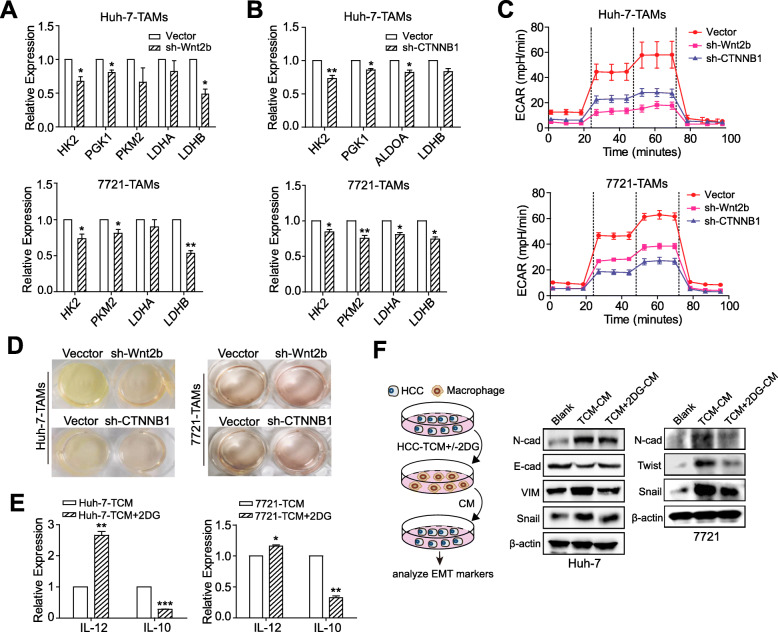Fig. 4.
Wnt2b/β-catenin signals affect the glycolysis of HCC-TAMs. THP-1 derived macrophages (THP-1-M) infected with control vectors, sh-Wnt2b or sh-CTNNB1 (β-catenin) vectors were obtained as described in Materials and Methods. These macrophages were incubated with 50% HCC-TCM for 48 h to obtain the different TAMs. a-b The mRNA expression levels of key enzymes involved in glycolysis were determined in these cells by qPCR. c The extracellular acidification rate (ECAR) of the indicated TAMs was measured with a seahorse analyser. d Different TAMs were cultured under normoxic conditions for 24 h. Acidification of the culture medium was evaluated by visual inspection of the colour of the medium from the indicated TAMs. e-f THP-1-M were treated with HCC-TCM for 20 h in the presence or absence of 2DG (12.5 mM) to obtain different TAMs. The expression levels of polarization markers in these TAMs were determined by qPCR (e). These TAMs were incubated with RPMI 1640 for an additional 24 h to obtain the condition medium (CM). HCC cells were cultured in the presence of indicated CM for 48 h. The expression levels of EMT markers were determined by western blotting (f). 2DG, 2-deoxy-D-glucose; qPCR, quantitative real-time PCR; HCC, hepatocellular carcinoma; TCM, tumour condition culture medium; TAMs, tumour-associated macrophages; 7721, SMMC-7721. Data are presented as means ± SEM from at least two (c) or three (a, b, d-f) independent experiments (*p < 0.05, **p < 0.01 and ***p < 0.001)

